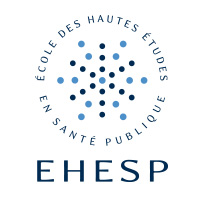Simulating the impact of greenspace exposure on metabolic biomarkers in a diverse population living in San Diego, California: A g-computation application
Résumé
Introduction: Growing evidence exists that greenspace exposure can reduce metabolic syndrome risk, a growing public health concern with well-documented inequities across population subgroups. We capitalize on the use of g-computation to simulate the influence of multiple possible interventions on residential greenspace on nine metabolic biomarkers and metabolic syndrome in adults (N = 555) from the 2014-2017 Community of Mine Study living in San Diego County, California.
Methods: Normalized difference vegetation index (NDVI) exposure from 2017 was averaged across a 400-m buffer around the participants' residential addresses. Participants' fasting plasma glucose, total cholesterol, high-density lipoprotein cholesterol, low-density lipoprotein cholesterol, and triglyceride concentrations, systolic and diastolic blood pressure, hemoglobin A1c (%), waist circumference, and metabolic syndrome were assessed as outcomes of interest. Using parametric g-computation, we calculated risk differences for participants being exposed to each decile of the participant NDVI distribution compared to minimum NDVI. Differential health impacts from NDVI exposure by sex, ethnicity, income, and age were examined.
Results: We found that a hypothetical increase in NDVI exposure led to a decrease in hemoglobin A1c (%), glucose, and high-density lipoprotein cholesterol concentrations, an increase in fasting total cholesterol, low-density lipoprotein cholesterol, and triglyceride concentrations, and minimal changes to systolic and diastolic blood pressure, waist circumference, and metabolic syndrome. The impact of NDVI changes was greater in women, Hispanic individuals, and those under 65 years old.
Conclusions: G-computation helps to simulate the potential health benefits of differential NDVI exposure and identifies which subpopulations can benefit most from targeted interventions aimed at minimizing health disparities.
Fichier principal
 simulating_the_impact_of_greenspace_exposure_on.12.pdf (1.41 Mo)
Télécharger le fichier
simulating_the_impact_of_greenspace_exposure_on.12.pdf (1.41 Mo)
Télécharger le fichier
| Origine | Fichiers éditeurs autorisés sur une archive ouverte |
|---|



